Local Haunts: 10 Spine-Tingling Spots To Visit In & Around Ditmas Park
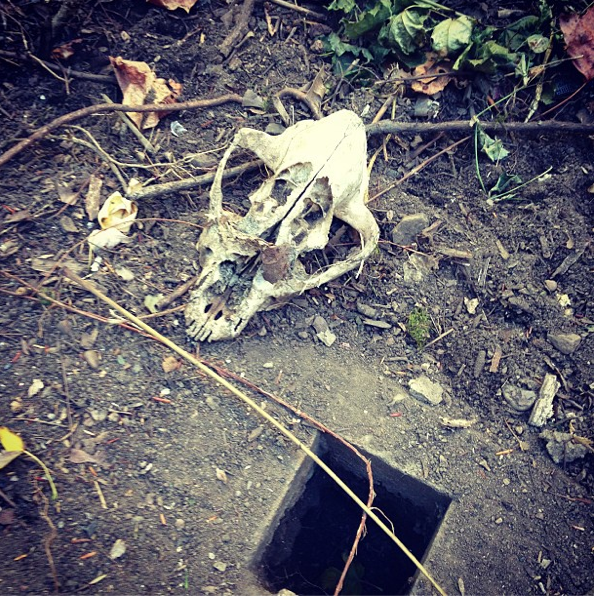
In honor of Halloween, we thought it could be fun to put together a spooktacular tour some of the creepiest places in the neighborhood. Follow our route (most of it can be done walking), add your weird memories of spots in Ditmas Park, let us know if we missed any good ones–and maybe bring along a friend.
The former Melrose Hall
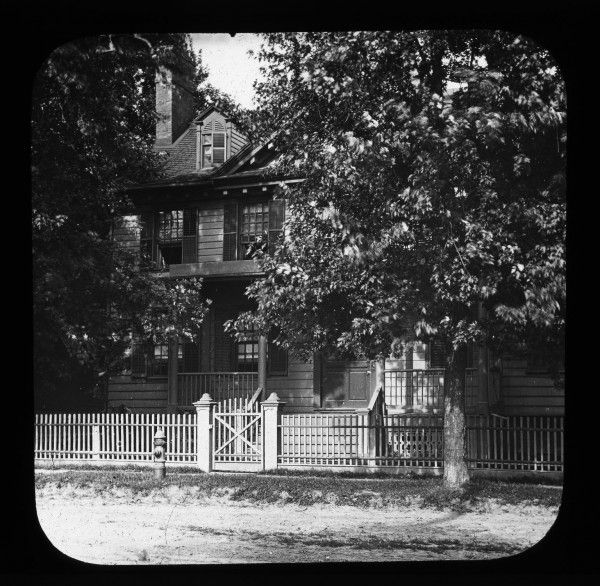
Photo via Brooklyn Visual Heritage
“Has secret passage and closet,” notes the above photo from Brooklyn Visual Heritage–and that’s just the beginning of the storied home on Bedford Avenue and Winthrop Street, demolished in 1903. Brownstoner has a fascinating four-part history of the building, constructed in 1749, including the supposed torture and killing of American soldiers during the Revolutionary War, the torturer’s mistress starving herself to death in a secret room, hundreds of dead birds, and more.
111 Clarkson Avenue
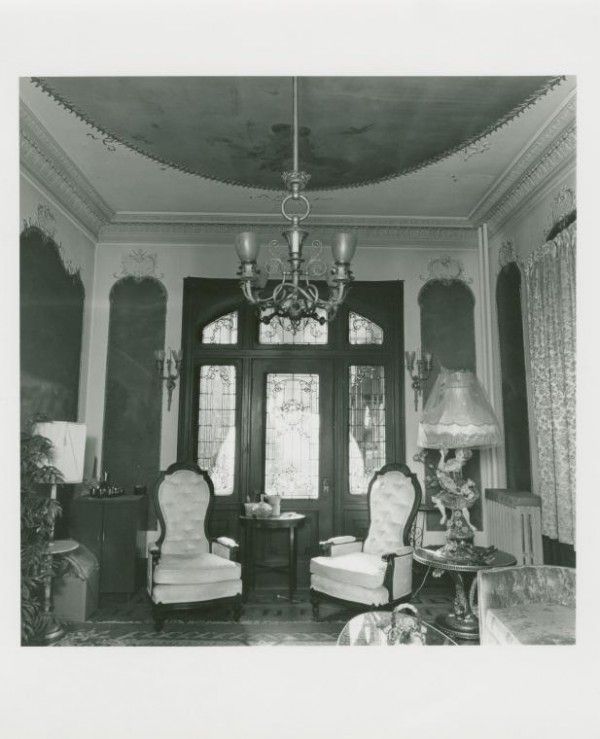
Photo via the New York Public Library
No torture, fatal hunger strikes, or other unfortunate incidents that we know of, but the architecture of the 1902 “Beserk Eclectic” building itself is what makes it seem sort of sinister. Anyway, it’s a treasure, and the really scary part is it’s about to be torn down and turned into luxury rentals by the developer who just bought it. Go take a peek at the outside and get your Addams Family on while you still can.
The Flatbush Reformed Church
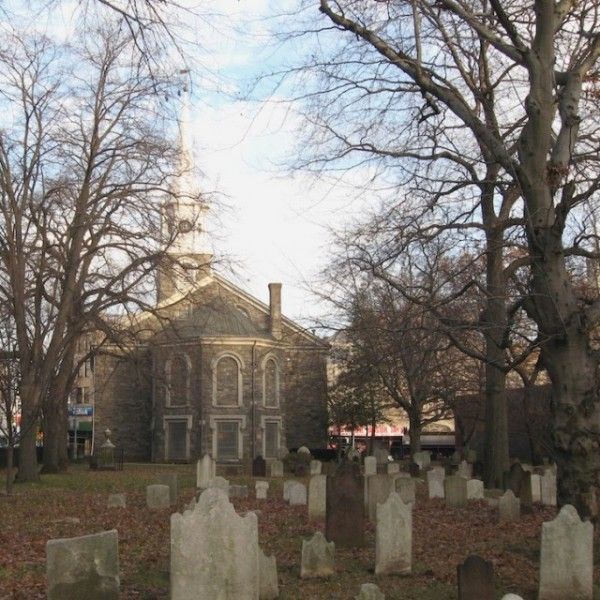
Photo via WikiCommons
These days, the Flatbush Reformed Church hosts great community faith, health, fitness, and entertainment programs–but did you know 890 Flatbush Avenue has been used for religious purposes since for nearly 360 years? That makes it the place in New York used for these purposes the longest, and sorry, but various films about exorcism always just remind us about the flip side of churches. Oh, and there’s an old-timey, well-eroded graveyard to boot.
“The graveyard of the Flatbush Church is so old,” says neighbor Benno Groeneveld, “some of the gravestones have inscriptions in Dutch, including some Lefferts family graves.” He translates “Hier leyt het lichaam van Peter Lefferts overleden den 13 Mar 1774 oude zynde 94 jaaren,” the inscription on Peter Lefferts’ grave, to “Here lies the body of Peter Lefferts, died the 13 of March 1774 at the age of 94.”
Caledonian Hospital
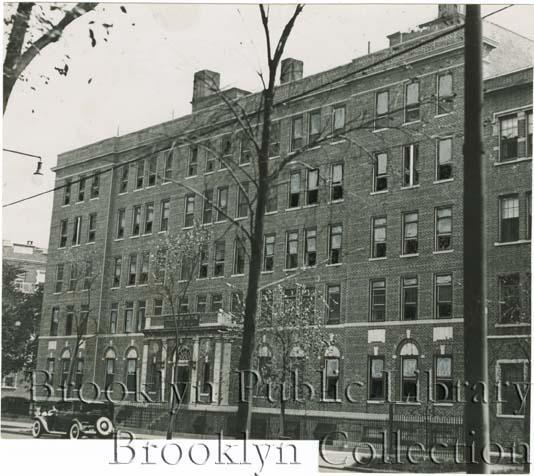
Photo via Brooklyn Visual Heritage
Can we all agree that defunct hospitals are, besides sad, incredibly creepy? Caledonian Hospital (Parkside Avenue and Saint Pauls Place) is another site currently being developed for more housing, and we can’t say we’re jealous of anyone who winds up living there.
1305 Albemarle Road (and a few other spots nearby)
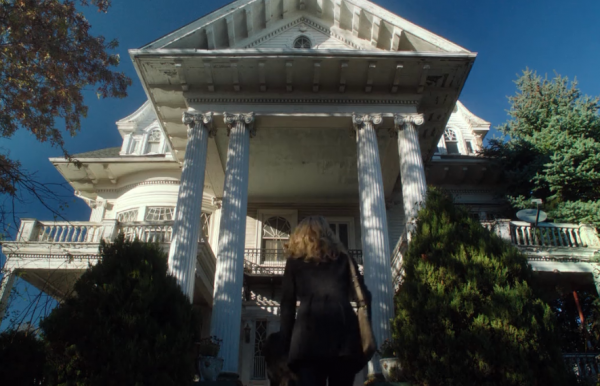
The primary thing that used to make this much-photographed home so unsettling, to us, was its unusual spider web-style windows, but having recently (we admit it) watched ABC’s short-lived 666 Park Avenue, it’s taken on a whole new life–or, should we say, death.
Across the street from 1503, 1216 Albemarle Road is getting less creepy by the day–but you might consider moseying down towards Buckingham and gazing southward to the empty lot where Dean Alvord‘s mansion once stood.
You can see 1522 Albemarle Road in the enlarged version of George R. Lawrence’s 1907 aerial photo of Prospect Park South (pretty much in the center of the right hand square), but the home, says Wikipedia, “burned down c.1955 under mysterious conditions after its sale by [then-owner and Ex-Lax Company founder Israel Matz‘s] family to apartment developers fell through in the face of community opposition.”
33 Hinckley Place
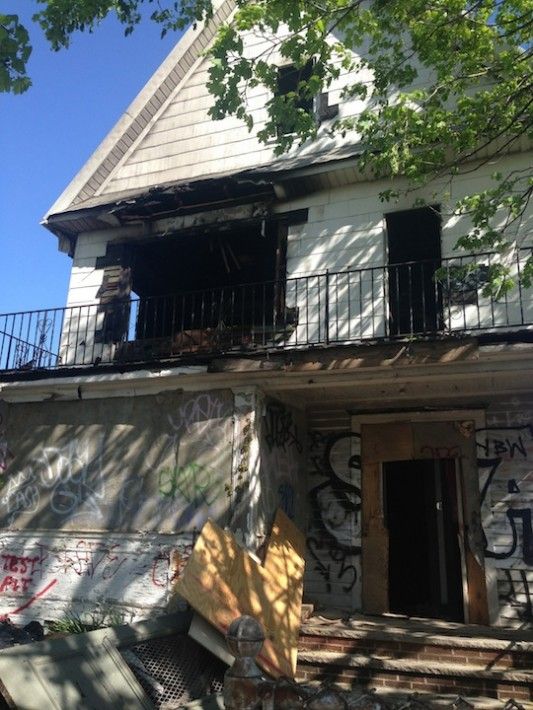
This building off Coney Island Avenue had a troubled past even before a two-alarm fire further damaged it in late April. In 1911, its then-owners tried to sell it with the line “people leaving town,” and it was the site of a brutal murder 100 years later. You know what? Neighbor Valerie Gallaher’s photo essay about what she deems Murder House sums it up pretty well.
39 Turner Place
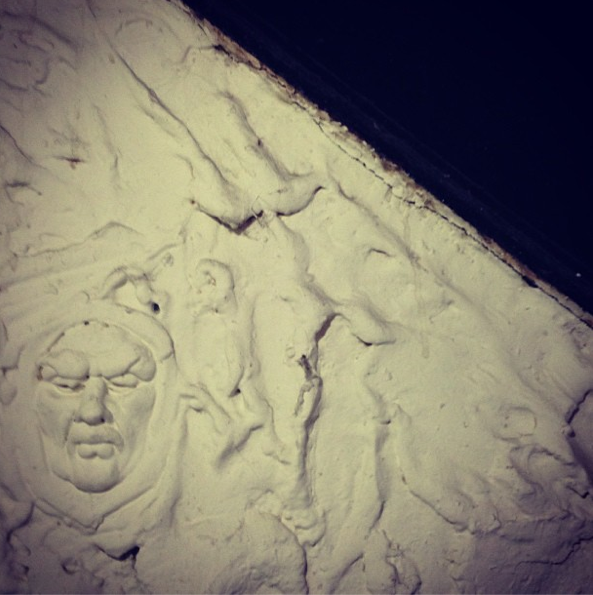
Photo via ditmasparkcorner
Just across Coney Island Avenue, the lobby of this apartment building holds more than you might catch at first glance. Are you really supposed to go wandering around in there? Of course not–it’s a private residence! But if you have friends or family in the building who can show you the two faces in the walls and the elves holding up the ceiling, it might be worth a phone call.
Ocean Avenue from Cortelyou to Farragut
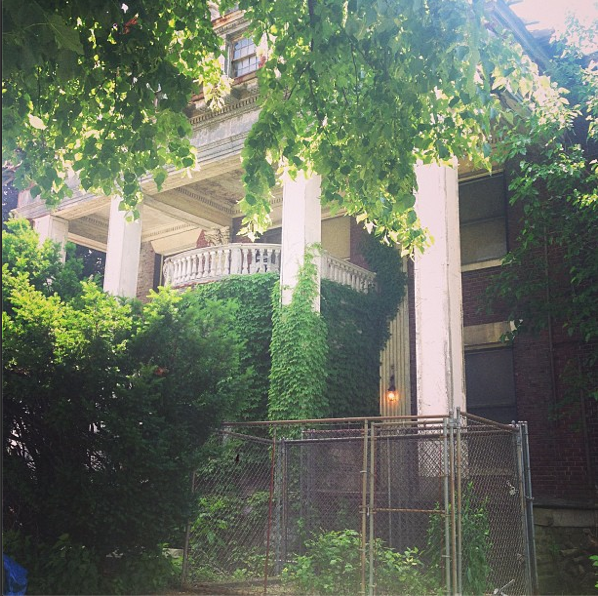
Photo via ditmasparkcorner
This is a great stretch of the walk to take if you want to see a ton of gorgeous, giant houses–it’s just what separates some from others is, well, some are abandoned and majorly overgrown. At least, they seem largely to be abandoned, except for the light that’s on sometimes when we pass by.
If the timing is right, stop into Our Lady of Refuge on the corner of Ocean and Farragut. For one, same rule as why the Flatbush Reformed Church gives us some heebie-jeebies; two, they just got their incredible 1930s pipe organ back. Danse Macabre, anyone?
551 E 19th Street
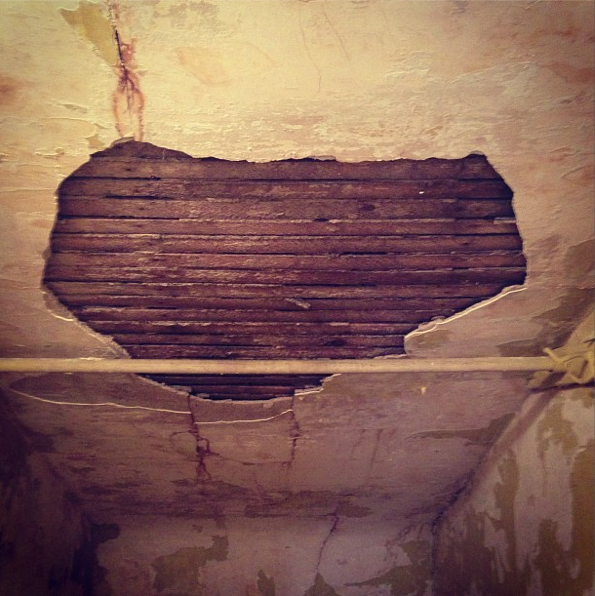
Photo via ditmasparkcorner
Disclaimer: this house is breathtakingly beautiful, and in no way do we mean to disparage it–it just hasn’t been updated in a long time, and there’s a lot of evidence of its past life in the present. Corcoran had an open house for this dilapidated wonder recently (which is where we spotted the skull at the top of this post, as well as plenty of peeling wallpaper and dark spots on the walls where paintings once hung). The building is still for sale, so keep an eye on their site for more viewing times–or arrange one of your own, because it really would be gorgeous, er, resurrected.
Basically, anywhere Adrian Kinloch goes
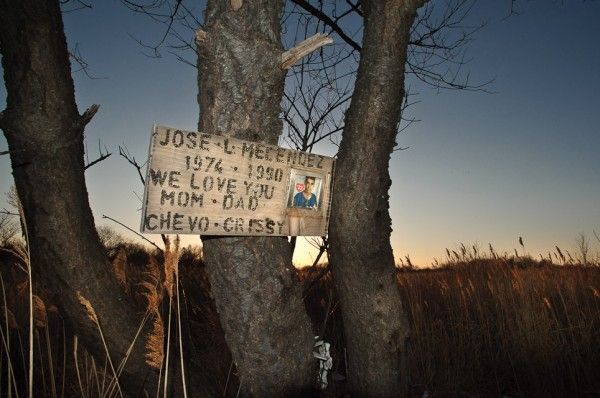
Photo © Adrian Kinloch
Neighbor and photographer Adrian Kinloch has a knack for capturing the unnerving in the could-be-mundane, including his photo essay Where the City Meets the Wild, recently published in Slate.
“So much of urban space is about human activity corralling and conquering nature,” Adrian says in the piece, “but you can glimpse the reverse in progress in so-called liminal spaces: transitional, threshold places where man has exploited nature and nature has returned to exploit what man has left behind—exploit it, but not purify it.”
Whatever is so scary about the idea of the logically-innocuous idea of nature reclaiming the manmade, Adrian’s work showcases it impeccably. Grab your keys or MetroCard and visit Gerritsen Beach, Marine Park, Dead Horse Bay, or Four Sparrow Marsh, stop for a moment like Adrian, and let the chills–and the awe, because a lot of the sights are lovely, too–set in.
So, what did we miss? If you’re not sufficiently creeped out by the list, let us know what else deserves to be on it–or just tell us a ghost story about Ditmas Park, ’cause it’s Halloween and that’s enough.
Top photo via ditmasparkcorner




